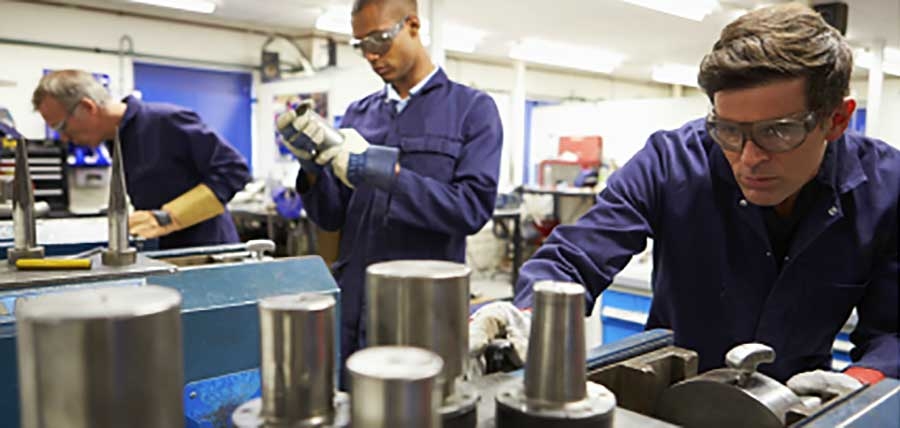In rural southeastern Oregon, economic development officials hope to create the next hub for high tech.
The Klamath County Economic Development Association projects $1B will be spent in the region over the next five years on infrastructure projects, much of it in the energy sector.
Kelley Minty Morris, chair of the Klamath County Board of Commissioners, and Greg O’Sullivan, executive director of Klamath County Economic Development Association, talked to Oregon Business about their efforts to attract tech companies to Klamath County, and how a sunny climate and world class recreation will draw graduates to the area.
OB: What are you doing to improve economic development in Klamath County?
Morris: One of my strategies is redefining us as a community. We have been a natural resources-based economy. That is an important part of our economy and we need to continue to push for appropriate policies that allow us to do those things. But at the same time we need to diversify. I am very committed to working toward that diversification and better using the university we have, the Oregon Institute of Technology, to provide opportunities for new types of economic development.
In Klamath County it is not a stretch to grow what we are doing in terms of technology and energy. We have 300 sunny days a year; we should be leaders in solar and geothermal. It is my strategy to encourage my community to look beyond what we have been in the past and look to growing new parts of our economy.
OB: How has your economic development model evolved to diversify your economy?
O’Sulllivan: It started about 18 to 12 months ago when we redid the economic development model here. It is now very much a private sector model with lots of public support. We started to look at our assets – Oregon Tech being one. Right beside Oregon Tech is about 400 acres of industrial property that is all finished out in parcels and lots but was never fully built out. Some folks got together on my board and decided to rebrand that as Tech Hills in cooperation with Oregon Tech.
We devised a whole new marketing strategy around the knowledge and innovation of Oregon Tech. We decided it only makes sense to go after advanced manufacturing and high tech companies that can use our grads. We have a 97% placement rate and these grads are going to places like Garmin, Boeing and Intel. Why can’t we capture some of that innovation and keep it locally? Part of our strategy is to contact those alumni companies to see if there is way if we could get a presence from those companies here. We are early in that strategy. We have contacted 20 to 30 of those companies. The early response is very good. We have got to keep going further down the road with that vision and provide some built space for companies to go to.
OB: Do you think it is possible that Klamath Falls could become the next tech hub?
O’Sullivan: I certainly do. Here is where we are at: The state of Oregon is short of industrial property. If you want to expand and retain companies in Oregon you have got to have places like Klamath Falls with its assets. There just isn’t the industrial property in Portland, Salem and other areas. It takes so long to bring new properties in because of the Oregon land use process.
Between Tech Hills and property at the airport, we have about 600 acres of industrial property waiting for companies. I do believe Klamath Falls can be the next tech hub because you have the recipe here: knowledge and innovation coming out of Oregon Tech and our local Klamath Community College. We have identified about a $1bn of investment that will come into this region in the next five years. Those are renewable energy projects and infrastructure investment. That is about 4,600 construction jobs in the next five years. Klamath Community College has said it will meet the demand for those construction trades.
OB: What is the biggest reason that graduates should stay in the area?
O’Sullivan: I think it is the quality of life. In my tenure, quality of life was not something we sold much. In today’s economy it is all about having a happy workforce and retaining a happy workforce. This is a different sell. If you are coming out of school and you want to go to the urbanized areas like Portland and San Francisco, Klamath Falls isn’t a good fit. But the average age of students at Oregon Tech is about 27 years of age. Many want to start a family. It makes sense for those graduates to be in a place with a low crime rate, wonderful weather and recreation. The sell hasn’t been hard.
OB: How close are you to finding a new president for the Oregon Institute of Technology?
Morris: The search committee has been working with a search firm to get a pool of applicants. We have approximately 40 applicants, which we are told by the search firm is a respectable applicant pool. We have face-to-face interviews scheduled for mid-October and on-campus interviews both at Klamath Falls and Wilsonville campuses in the early part of November. The goal is to present a candidate to the board of trustees in November and get someone on board at the first of the year.
OB: What kind of qualities and experience are you looking for in a new president?
Morris: We are open-minded. We are genuinely looking for a person who is the right fit to take Oregon Tech to the next level, whether it is someone from traditional academics or someone from the business community. The committee wants a dynamic, energetic leader, who also understands the connection between the university and the Klamath community.




